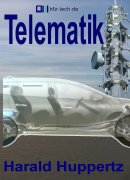Soichiro Honda was born in 1906 as the eldest of five children in the rural Tenryu. The father runs a blacksmith shop, which will develop over 10 years to a repair shop for bikes. The son begins with the end of 15 after completion of primary school a sort of traineeship in an automotive repair shop in Tokyo. This job is not immediately successful, for he is first and foremost asked as a babysitter with workshop prohibition. They are all imported cars which in relatively small numbers conquer the Japanese islands at that time. There are villages, there is one car per year, a main attraction.
Current events give an idea that Japan has been frequently hit by severe earthquakes. So also Tokyo in 1922, the Honda experienced at the beginning of his stay. He is forced to take part in saving the vehicles, the greatest property of the company. These are his first car driving experiences.
After all, one already drive races including Soichiro Honda as a passenger of his boss. It is an American V8 Curtiss, whose engine is also used in aircrafts. After all, therewith are possible Japanese racing records and Honda no more get free from the whole racing scene, until his brother is seriously injured as a passenger in the All-Japan Speed Rally 1936.
But (1928) Soichiro Honda is long returned to his native village and has opened 25 kilometers away in the city of Hamamatsu a subsidiary of the company in Tokyo. But he would not have become really famous with this workshop even though he is known in his country as the inventor of steel instead of wood rims, and it already brings at a young age (for Japan) to a degree of prosperity.
Out of his world, he comes through the internal development of the time difficult to obtain parts namely, the piston rings. During this time he completed a kind of catch up studies at the local university which ends with his expulsion. After all, he has learned so much that it finally leads to the foundation of a new factory even the Toyota supplies with piston rings.
Of course there are also and especially in Japan, the dramatic effects of World War II meanwhile, Honda merits acquires in the reorganization in the production of propellers. Since he produced strategic goods of importance for the war, its factories are subjected to more bomb attacks. Therefore, Soichiro Honda is at the end of the war totally unemployed.
One of the reasons for Honda's successful conquest of the world are probably the motorcycles with the famous four-stroke in-line engines. Among these there are also types that belong to the most built in the world. This can happen because the company combines a really good price with good manufacturing quality.
But it will not stay so long. But because the country's needs have changed fundamentally, he begins with the production of motorized bicycles. It should have been a wooden shed, wherein the first engines of a series of 500 left over from the war are mounted in delivered new bicycle frames.
Almost even more energy he uses to the procurement of fuel that is of course rationed in this time. With the help of a purchased quota of spruces, he is able to stretch fuel with tree oil and sell it. Whether the smoke generated during operation or the form of the exhaust manifold provoked the nickname of 'chimney' for the vehicles are still unclear.
The trophy for the absolute highest number of sales probably belongs the moped Cup that is is in Japan earlier, but the world will be introduced officially in 1958. With this offer begins the offensive drive of the Japanese producers. Thereby means Cheap Urban Peak only that is is cheap and mainly used for the city.
Striking aspect of the bike is that Honda so very early focus on the four-stroke engine, even though all the world the 50 cc engine trusts only as a two-stroke a reasonably satisfying performance development. To date, more than 60 million buyers show that the company has developed the motor accordingly, in addition to develop besides low fuel consumption also enough power.
And if the slogan is, you meet the nicest people on a Honda, then this is of course supported of the much less unpleasant exhaust gases of a four-stroke compared to the two-stroke. Probably, this vehicle has mainly helped to promote mobility in poor (developing) countries. From Honda, it has been developed significantly in spite of the low price.
One can imagine what all is transported on this bike in Asia. Besides the low price there is a consumption of less than one liter per 100 km and easy handling by automatically mobilized coupling. Also, the engine is quiet and keeps long until the first overhaul, in principle longer than a two-stroke.
A special feature of the time the first model has several plastic parts e.g. driving wind and rain protection for the legs. Initially, this force probably that this moped is available only in one colour. The engine develops the course of time from 50 cc up to 125 cc, OHV to SOHC, contact controlled to transistor ignition, air to liquid cooling and electric starter.
By the way, the idea is to distinguish from the competition with the construction of four-strokes, Soichiro Honda supposed to have been given by the businessman Takeo Fujisawa. Marketing also plays a crucial role in the success of the Super Cub. Not only the catchy slogans, also until then never known ads in major American magazines up to the Playboy.
Who already his fourth model calls not just 'D', but 'Dream' must be familiar with this sector at least a bit. It is also the skill, despite racing successes still emphasizes the safety and reliability of his products. 01/12
| | |||||||||||||||||||||||||||||||||||||||||||||||||||||||||||||||||||||||


 Honda - Geschichte
Honda - Geschichte